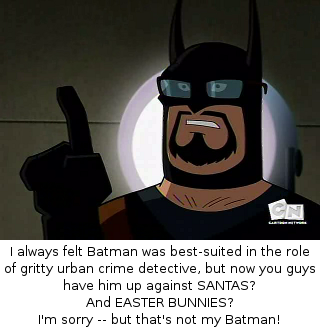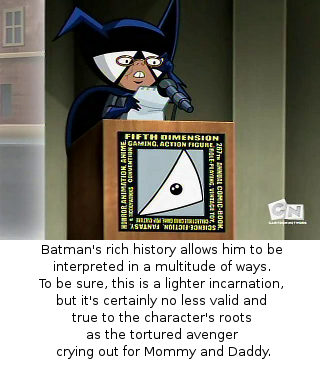So back in 2008, after my sixth consecutive post (and twelfth post overall) in the Old Doctor Who thread, Brontoforumgoer Bal had this piece of advice:
So Thad, I know you love Doctor Who, and so do I, but uh, this whole thread is just you talking to yourself. Maybe you should just start a Doctor Who appreciation blog.
Well, he makes a good point. I'm not going to turn this into a Doctor Who appreciation blog, but I am going to repost some of my old episode reviews here.
I wrote a few back on the Pyoko boards but none of those appear to have been archived, so I'll just start with the first one I wrote on Brontoforumus: Earthshock.
Originally posted on Brontoforumus, 2008-02-22.
The original post contained spoiler tags. I'm going to omit them here. So, be forewarned: an extremely well-known spoiler from a 30-year-old Doctor Who serial, that is in fact probably the best-remembered sequence in the entire Davison run, follows.
Earthshock is a Davison-era serial best remembered for the death of Adric.
One of the reasons it is best remembered for that is that the rest of it is pretty thoroughly forgettable.
I hope you like stories where the Doctor materializes in the middle of a murder investigation, is falsely accused and taken into custody, and his captors don't believe his story until the real killers show up and start shooting people...because for some reason that happens twice in this serial.
The more interesting angle is the attempt to establish a father/son relationship between the Doctor and Adric. Unfortunately, Adric is at his most obnoxious here and what we see is full-on teen drama, which amounts to "You treat me like a child, you're not my real father, I liked Tom Baker better, I wanna go home, waaaaaaah." (And really, who didn't like Tom Baker better.)
Just to review Adric's faults, since the spotlight's on him here: while he predates Wesley Crusher, he's pretty much in his mold. He's the precocious child who somehow manages to show up all the adults on the show every time there's a problem to solve. Adding teen angst to his character traits does not make him more sympathetic.
That said, the attempt to explore the Doctor's companions as surrogate family is a noble one. We see a paternal side of the Doctor that recalls the First Doctor's farewell to Susan.
After that it's largely a straightforward Cybermen story; the Fifth Doctor's first (and only, unless you count their brief appearance in The Five Doctors) encounter with them. (As the Cybermen recognize the Doctor and recount his previous appearances, they bring up, by omission, the interesting bit of trivia that they didn't appear during Pertwee's run.) Pretty standard stuff; they're trying to destroy the Earth for what turns out to be a supremely nonsensical reason. (It turns out that a coalition of planetary leaders is meeting on Earth to declare war on the Cybermen; the Cyber Leader plans to wipe them all out in one fell swoop as this will "destroy their unity". Because nothing destroys the unity of a group that wants to declare war on you like assassinating all their heads of state.)
The big payoff is in the last five minutes -- a frantic battle with the Cyber Leader on the TARDIS, while the rest of the cast race against time on the bridge of a spaceship to prevent its lethal collision course with Earth. It's a tense and extraordinarily well-executed climax.
Adric's death is handled surprisingly well. He dies in truly precocious-child fashion, with the words "Now I'll never know if I was right" -- managing to turn his most obnoxious character trait into something bleakly charming. The reaction on the TARDIS is beautifully handled -- stunned, slackjawed silence, which carries over through the credits.
The presentation is slick -- the transition from the caves to the ship shows some good range in setting, and the Cybermen look less ridiculous than they did during the Troughton years. The score is solid, not nearly the overbearing early-'80's synth that characterized some of the late Baker stories.
This is one of those eps that's considered a classic by fans whose appeal I can't see so well watching it for the first time with no emotional investment. (This seems to be a trend among Cybermen stories.) The payoff of the last five minutes is excellent, and the pacing of the story is tight except for the fact that the first and third episode have exactly the same plot, but all in all I'd say it's a pretty average story. At the time of this posting Netflix has it available by mail but not for streaming, and Amazon's purchase price is $12.99, which is fair. (Update 2013-01-29: It's also streaming, free with Amazon Prime.)

